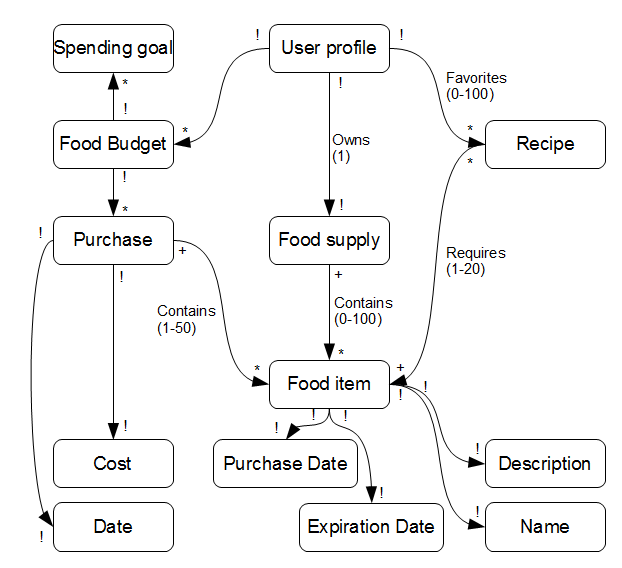GR1 - Task analysis
User analysis
The users will be students and young adults who buy food for themselves/their household and who are interested in staying within a budget and not wasting purchased food. Many students in this age group live in dorms or apartments and share food storage space with others. Users we talked to expressed frustration at the difficulty of remembering what was in the refrigerator when it is packed with others' food. Most in this group do not cook or go through their fridge every day, making it even harder to keep track. For instance, a student remembered planning on cooking chicken after working three days straight only to realize that the chicken was expiration and bad. These situations waste food and money for those who are likely to be on some sort of budget.
Characteristics:
- age 17 - 35
- likely share kitchen facilities, and may loose track of food they have there
- may be financially tight
- interested in limiting food waste
- unsure how to use up/freeze certain products purchased
- doesn’t cook every night
- buys food once every 1-3 weeks
Needs:
- have access to list of food in refrigerator and cabinets
- know how much money has been spent on food in a given period of time
- track how long food has been stored for t
- easily access hints for preserving/cooking food to prevent waste
Personae:
- Matt is a freshman at MIT, lives in a dorm and shares a kitchen with 9 other students. He buys enough food for a week at a time. Matt’s hall-mates sometimes bring back leftover food from events, and he doesn’t know what to do with the extra food he bought earlier in the week.
- Sarah is a vegan living with three others in a small house in Summerville. She buys fresh greens, carrots and squash every week, but often forgets about how quickly greens go bad. She eats other food first, and only gets through half the bag of spinach before it gets slimy.
- Ben is a junior who gets $250 dollars to spend on food a month from his parents. He went way over this budget last semester and his parents got angry. Ben wants to track his spending to avoid doing that again.
Task analysis
- Task: Manage food budget
- Subtask: set monthly food budget
- Precondition: Log into account (register if new user)
- Identify amount
- Subtask: view food spending
- Precondition: Log into account
- Select viewing method (progress bar, graph, etc.)
- Subtask: add food purchases
- Precondition: Log into account
- Enter value spent on food
- Subtask: set monthly food budget
- Task: Keep track of food supply
- Subtask: view food items and expiration status
- Precondition: Log into account
- Select viewing/sorting method
- Subtask: add food items to food supply
- Precondition: Log into account
- Specify food item
- Specify quantity
- Specify date added
- Subtask: remove food item(s) from food supply
- Precondition: Log into account
- Select food item(s)
- Delete selected items
- Subtask: view food items and expiration status
- Task: Find and save recipes
- Subtask: find recipes based on food supply
- Precondition: Log into account
- Precondition: Specify current food supply (so that recipes can be found using those foods)
- Enter desired recipe difficulty
- View found recipes
- Subtask: save recipes
- Precondition: Log into account
- Precondition: Perform recipe search and select recipe
- Click to save recipe
- Subtask: view saved recipes
- Precondition: Log into account
- Select sorting method (newest, difficulty, etc.)
- Subtask: find recipes based on food supply

1 Comment
Tsung-Hsiang Chang